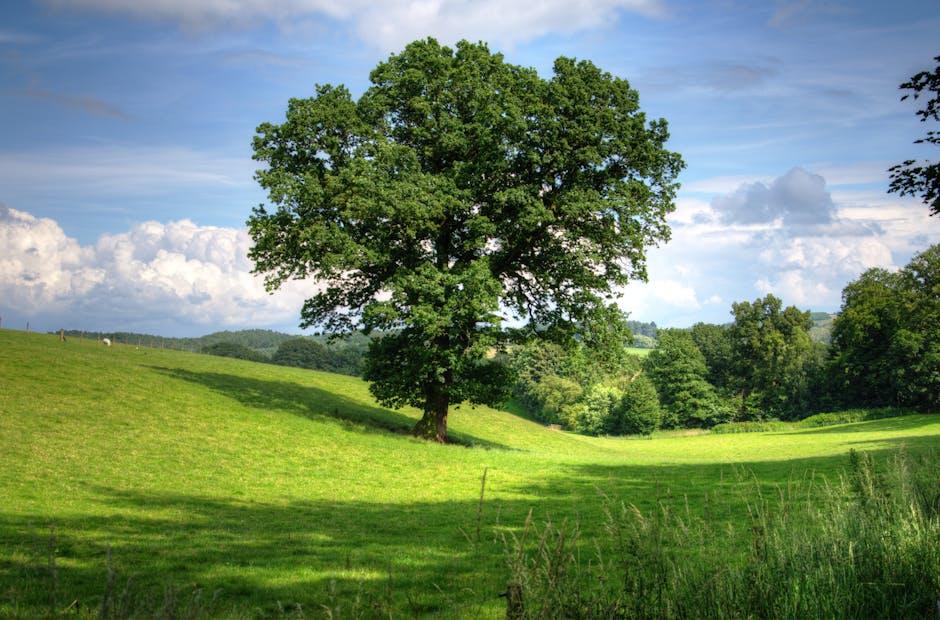Urban heat islands are a growing concern in cities worldwide, leading to increased temperatures, air pollution, and energy consumption. One effective solution to combatting this phenomenon is through the strategic use of trees. In this article, we will explore the various ways in which trees can help reduce urban heat and create a more sustainable and comfortable environment for city residents.
When it comes to combating the urban heat island effect, trees play a crucial role in reducing temperatures in cities. The shade provided by tree canopy helps to cool down the surroundings, making urban areas more comfortable for residents, especially during hot summer months. Trees also release water vapor through a process called transpiration, which further contributes to lowering temperatures.
Choosing the right tree species is essential for maximizing the cooling effects in urban areas. **Heat-tolerant** species such as oak, maple, and cedar are ideal for withstanding high temperatures and providing ample shade. These trees not only help in reducing the overall temperature but also enhance the aesthetic appeal of the city streets.
Community involvement in tree planting initiatives is key to ensuring a sustainable approach towards urban heat reduction. By engaging with local residents and organizations, cities can create a sense of ownership and responsibility towards maintaining a green and cool environment. **Design strategies**, such as planting trees strategically in urban spaces and parks, can also enhance the effectiveness of heat mitigation efforts in cities.
Q&A
Q: What is urban heat reduction and why is it important?
A: Urban heat reduction refers to efforts to reduce the heat island effect in urban areas, where temperatures are much higher than in surrounding rural areas. This is important because excessive heat can have negative impacts on human health, energy consumption, and the environment.
Q: How can trees help in reducing urban heat?
A: Trees provide shade, which helps lower surface temperatures and reduce the need for air conditioning. They also release water vapor through a process called transpiration, which cools the surrounding air.
Q: What are some other benefits of using trees for urban heat reduction?
A: In addition to cooling the air and providing shade, trees can improve air quality, reduce noise pollution, and increase property values. They also provide habitat for wildlife and contribute to the overall aesthetic appeal of urban areas.
Q: What are some common types of trees used for urban heat reduction?
A: Some common types of trees used for urban heat reduction include deciduous trees, which provide shade in the summer but allow sunlight to pass through in the winter, and evergreen trees, which provide year-round shade and can help block wind in colder months.
Q: Are there any challenges or considerations to keep in mind when using trees for urban heat reduction?
A: Some challenges to consider include selecting appropriate tree species for the local climate and ensuring proper maintenance and care to prevent issues such as disease or storm damage. Additionally, it’s important to consider factors such as soil quality, space availability, and potential conflicts with underground utilities.
Q: What are some examples of successful tree planting projects for urban heat reduction?
A: Cities such as New York City, Chicago, and Los Angeles have implemented tree planting initiatives to help reduce urban heat and improve overall quality of life. These projects involve planting trees in public spaces, parks, and along streets to maximize their cooling effects.
Conclusion
In conclusion, the implementation of trees in urban areas is a crucial strategy for reducing the heat island effect and improving the overall quality of life for residents. By strategically planting and maintaining trees, cities can effectively combat rising temperatures, enhance air quality, and create more livable and sustainable environments. As urban areas continue to grow and face increasing climate challenges, prioritizing the use of trees in heat reduction efforts is essential for creating healthier and more resilient communities. We hope this article has shed light on the importance of trees in urban heat reduction and inspired further action towards greener, cooler cities. Thank you for reading.
Simpsons Tree Services, Servicing Melbourne’s North Eastern Suburbs
Book a quote online at www.simpsonstrees.com.au




